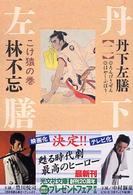- ホーム
- > 洋書
- > ドイツ書
- > Humanities, Arts & Music
- > Arts
- > interior decoration & design
Description
(Text)
The goldsmith Renate Heintze (1936-1991) supervised the jewelry class at Burg Giebichenstein Kunsthochschule Halle from 1974 right until her death. She belongs to the generation of those jewelry artists who burst the confines of traditional artisanal work in the sixties of the 20th century and became the trailblazers of international studio jewelry. The book titled "Renate Heintze. Fazit" has now been published in the publishing house Janos Stekovics as a monograph about her life's work.
Subsequent to a goldsmith's apprenticeship in Naumburg, Renate Heintze studied at the Burg Giebichenstein Kunsthochschule Halle from 1953 to 1959. In the 1950s the university in Halle (Saale) was shaped by the teachers who belonged to the generation of its founders, who had salvaged their visions and ideals of a tempered Modernism all through the Nazi times and were arming themselves against the ideologically motivated formalism verdict superimposed by the state. Renate Heintze's teacher, the metal sculptor Karl Müller, conveyed a position underpinned by the ideal of the Burg and Bauhaus Modernism, in which the disciplined formal language was intertwined with artisanal skill.
After two years' activity as a jewelry designer in the industry and four years of self-employed work as a goldsmith, Renate Heintze returned to the university in Halle in 1966 and took over the supervision of the jewelry class in 1974. Together with Dorothea Prühl she developed a new teaching concept which was orientated towards creating artistically unique specimen. In the face of massive opposition due to East German cultural politics of the sixties and seventies, it became possible to liberate Halle jewelry from the shackles of the restricted understanding of tradition and function. The pillars of this program were a visual idea and a handling with different materials, nature study in terms of observation and contemplative analysis the object and, not least, the valid plastic rendering. In this sense Renate Heintze is the founder of the Halle jewelry school, which enjoys international recognition nowadays.
Complemented by draft sketches and models, the comprehensive pictorial section of the book displays, in large-scale illustrations, the selected works from all work groups of the artist. Many of these jewelry pieces are to be found in public and private collections. Larger collections are hosted by the Kunstmuseum Moritzburg Halle, the Kunstgewerbemuseum Berlin and the GRASSI Museum für Angewandte Kunst in Leipzig. Since the opening of the Danner-Rotunda in 2004, Renate Heintze's works can be seen in the permanent exhibition of the Neue Sammlung in Munich as an aquisition of the Danner Foundation.
The comprehensive pictorial section is complemented by five brief essays by renowned authors: for Katja Schneider, Renate Heintze is a trailblazer of studio jewelry and her work is exemplary for the self-conception of contemporary jewelry art common today; Christiane Keisch sees in Renate Heintze a "key figure in creating jewelry in the GDR" and describes her independent contribution to the formation of the "Halle style"; the artist Margit Jäschke reminisces about her mentor with gratitude; Wolfgang Lösche emphasizes that - after Dorothea Prühl - with Renate Heintze the second goldsmith from Halle is now already represented within the scope of the Internationale Handwerksmesse in Munich as a "classic of Modernity"; for Petra Hölscher, Renate Heintze is an integral part of the canon of international studio jewelry. In the appendix to the book the reader can find an annotated and illustrated biography, giving condensed information about the artist's life and work.
Renate Heintze deserves recognition and appreciation in the line of those goldsmiths, famous and influential today, who, both with their works and as teachers, have paved the way to our contemporary jewelry art. Because of her early death, this is only little known nowadays.
(Author portrait)
Renate Luckner-Bien, Dipl.Formgestalterin, promovierte Kunsthistorikerin, ist Leiterin der Abt. Öffenlichkeitsarbeit sowie Pressesprecherin der Burg Giebichenstein. Sie ist auch als Herausgeberin und Kuratorin tätig.






